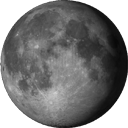The night sky in December 2025
Another year is coming to its end and we are almost in the middle of the longest night of the year. Great opportunities for observing and imaging….provided the skies stay clear.
The Winter Solstice is on 22nd December, it is the time when the north pole points at it’s maximum tilt away from the Sun and becomes our shortest day. In many other cultures, including ancient ones in the UK it is associated with the and rebirth of the Sun. Our nights will start to get shorter.
Meteor Showers
This month it is time for the Geminids to appear. Best seen between 4-20th December, peaking around 14th-15th December. It is usually a good meteor event, and the Moon is in a waning crescent phase on those dates.
See https://in-the-sky.org/news.php?id=20251214_10_100 for more detail.
It is thought that the Geminids origin lies with an asteroid called Phaethon.
A smaller shower, the Ursids, occurs 17th-26th December peaking around 22-23rd December. The centre is around Kochab (Beta Umi) and is associated with comet 8P/Tuttle. https://in-the-sky.org/news.php?id=20251222_10_100
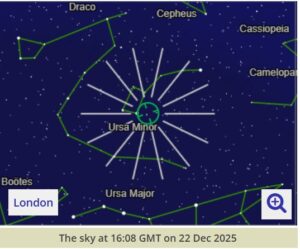
The Moon
The new Moon starts on 1st December, reaching First Quarter on 9th December, Full Moon 15th December and Last Quarter on 22nd December.
The Planets
Mercury: Is back as a morning object in the SE, reaching its greatest altitude on 7th December at about 15º it is also at its greatest elongation.
Venus: Though a morning planet it is too close to the Sun to be observed.
Mars: Like Venus Mars is to close to the Sun to be observable.
Jupiter: As I write this in late November Jupiter is shining brilliantly high in the sky . At the end of December it will be mag -2.4 so bright indeed and is in the constellation of Gemini. It is a good month to observe the Galilean Moons making transits and occultations.
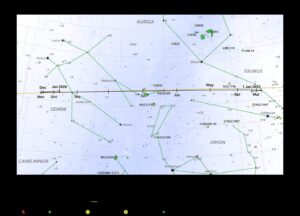
( source: https://in-the-sky.org//data/object.php?id=P5)
Saturn: Reach its peak altitude on December 1st at 33°. The rings are
currently hard to see as they are just about a]edge on to Earth.
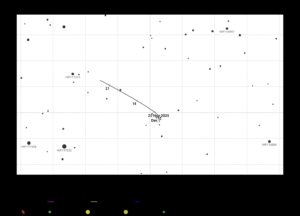
https://in-the-sky.org/findercharts/08saturn_2025_1.png
Uranus: Can be found south of the Pleiades, for those with good eyesight and night vision it might be just visible at a magnitude of +5 mag.
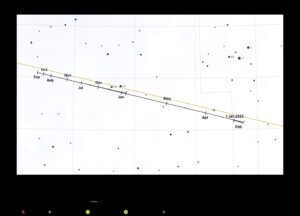
Neptune: Can be found close to Saturn, around 4° to the NW of Saturn in Pisces.
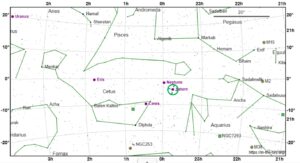
The Stars
The winter consternations are now on parade. Orion with Taurus above dominating the southern aspect of the night sky around 15th December at 23:00.
Below is an asterism called the Winter Triangle. Much like the Summer Triangle it is an aid to locating a number of constellations using their bright stars.
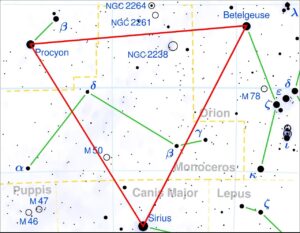
(source Wikipedia)
It can be extended to a Winter Hexagon.
It then encompasses Orion, Gemini, Auriga and parts of Monoceros, Canis Major and Taurus.
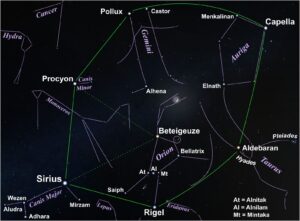
A usefull website with lots of detail and information is https://in-the-sky.org/
Keep looking up
Frank Dutton FRAS
Keep Looking Up
Frank Dutton FRAS
